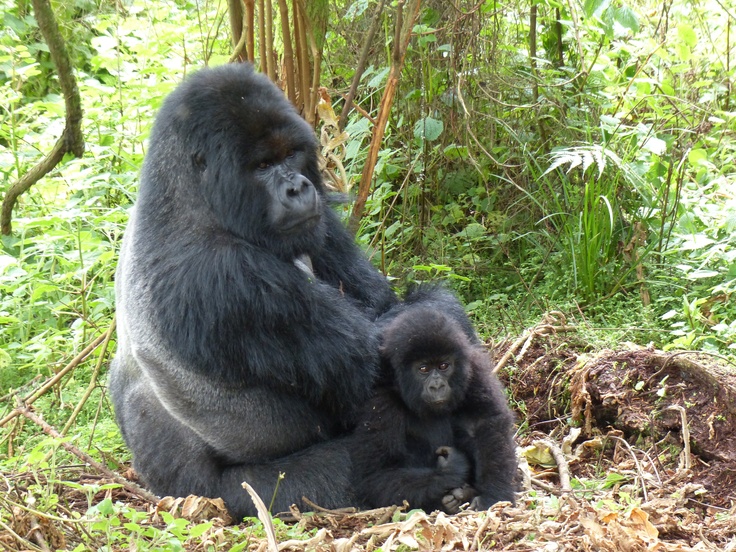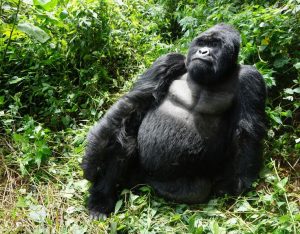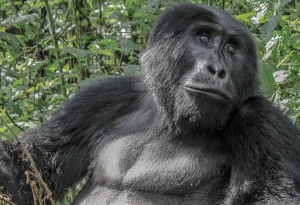East Africa is home to some of the world’s most iconic wildlife, from mountain gorillas in misty forests to elephants roaming vast savannahs. For decades, many of these species faced serious threats from poaching, habitat loss, and human-wildlife conflict. However, East Africa has also become a global leader in conservation, with several remarkable success stories. These achievements demonstrate how governments, local communities, and conservation organizations can work together to protect endangered species and restore ecosystems. Wildlife Conservation Success Stories in East Africa
What are the biggest wildlife conservation success stories in East Africa?
East Africa has seen several remarkable conservation victories. Among the most notable are the recovery of mountain gorillas in Uganda and Rwanda, the protection and reintroduction of black rhinos in Kenya, the decline in elephant poaching, the safeguarding of Grevy’s zebras, and successful giraffe conservation programs. Additionally, community conservancies have transformed how local people interact with wildlife, while marine conservation efforts have protected coral reefs and endangered sea life.
These stories prove that conservation, when combined with community participation and strong legal protection, can reverse declines and ensure wildlife thrives for generations.
How has mountain gorilla conservation succeeded in Uganda and Rwanda?
Mountain gorilla conservation is one of the most celebrated success stories in East Africa. In the 1980s, fewer than 300 mountain gorillas survived in the wild, confined to small areas of Uganda, Rwanda, and the Democratic Republic of Congo. Poaching, habitat loss, and political instability threatened their survival.
Through coordinated efforts, populations have more than doubled. Uganda’s Bwindi Impenetrable National Park and Rwanda’s Volcanoes National Park have implemented strict protection measures, including anti-poaching patrols, veterinary care, and regulated tourism. Revenue from gorilla trekking permits is shared with local communities, providing financial incentives to protect the species.
As a result, the mountain gorilla was reclassified from “critically endangered” to “endangered” by the IUCN. This recovery shows the power of community-based conservation and responsible tourism.
What efforts helped save black rhinos in Kenya?
Kenya’s black rhino population faced near extinction during the 1970s and 1980s due to poaching for horns. Numbers dropped to fewer than 400 individuals. Recognizing the crisis, Kenya created secure sanctuaries and launched intensive anti-poaching campaigns.
Conservancies like Ol Pejeta, Lewa Wildlife Conservancy, and Nairobi National Park have become strongholds for black rhinos. Breeding programs and reintroductions to safe habitats have helped the species slowly recover. Today, Kenya is home to over 900 black rhinos, making it one of the most important countries for their survival.
Strict monitoring, ranger patrols, and community involvement continue to ensure rhino populations grow. The story of the black rhino highlights how determined protection and habitat security can reverse even the steepest declines.
How has elephant poaching been reduced in East Africa?
Elephant poaching once devastated populations across East Africa. In the early 2000s, thousands of elephants were killed each year for ivory. However, a combination of international ivory trade bans, stronger law enforcement, and community engagement has dramatically reduced poaching in many areas.
Kenya has led the way by creating specialized anti-poaching units and burning seized ivory to send a clear message against the trade. Tanzania’s elephant populations in places like the Serengeti and Tarangire are also recovering after years of decline.
Community conservancies now give locals a financial stake in elephant conservation through tourism, reducing incentives for poaching. As a result, elephant populations are stabilizing, with notable growth in some protected areas. Wildlife Conservation Success Stories in East Africa
What role do community conservancies play in wildlife protection?
Community conservancies are among the most innovative conservation approaches in East Africa. These are areas where local people collectively manage land for both wildlife and livestock, supported by conservation organizations. Wildlife Conservation Success Stories in East Africa
In Kenya, over 160 community conservancies cover millions of hectares, providing safe corridors for wildlife outside national parks. Communities benefit from tourism revenue, job opportunities, and education programs funded by conservation. Conservancies also reduce conflict between humans and wildlife by promoting coexistence strategies. Wildlife Conservation Success Stories in East Africa
This model ensures that wildlife conservation is not just about protecting animals but also about supporting the people who share land with them.
How is lion conservation in Kenya improving populations?
Lions face threats from habitat loss, retaliation killings, and declining prey. However, Kenya has pioneered community-driven lion conservation initiatives. Programs like the Lion Guardians train local Maasai warriors to monitor lion movements, prevent livestock attacks, and mediate conflicts between people and predators.
In community conservancies such as those around Amboseli and the Maasai Mara, lion numbers have stabilized. Tourism revenue from safaris provides incentives for communities to protect lions, shifting perceptions from enemies to valuable assets.
The success of lion conservation in Kenya demonstrates how community involvement can reduce conflict and support predator recovery.
What are the success stories of giraffe conservation in East Africa?
Giraffes, once considered common, have faced sharp population declines. However, East Africa has made significant progress in their protection. In Uganda, Rothschild’s giraffes were translocated to safe habitats such as Lake Mburo National Park and Pian Upe Wildlife Reserve. These efforts have created new, thriving populations.
Kenya has also worked to protect reticulated giraffes through community conservancies in the north. Organizations like the Giraffe Conservation Foundation partner with locals to safeguard habitats and monitor populations.
As a result, giraffe populations in several areas are increasing, turning the tide for this iconic species.
How are Grevy’s zebras being protected in Kenya?
Grevy’s zebra, the rarest of all zebra species, is found primarily in northern Kenya. With fewer than 2,500 individuals left, the species is endangered. Conservation efforts have focused on habitat protection, reducing competition with livestock, and involving pastoralist communities in monitoring.
Community conservancies in Samburu, Isiolo, and Laikipia have been vital for the species. Programs train local scouts to track zebra populations, while tourism helps fund conservation. These efforts have stabilized numbers and given hope for long-term recovery.
What marine conservation success stories exist in East Africa?
East Africa’s conservation successes are not limited to land. Marine parks and protected areas have helped restore coral reefs, mangroves, and endangered marine species.
In Tanzania, Chumbe Island Coral Park is a leading example, with healthy reefs teeming with marine life thanks to strict no-fishing policies. Similarly, in Kenya, Watamu Marine National Park has become a haven for sea turtles, dolphins, and corals.
Community-led initiatives also play a key role, with local fishermen adopting sustainable practices that balance livelihoods and conservation. These marine conservation stories highlight East Africa’s holistic approach to protecting both land and sea ecosystems.
How do national parks contribute to wildlife conservation in East Africa?
National parks are the backbone of East Africa’s conservation success. Parks like Serengeti (Tanzania), Maasai Mara (Kenya), and Bwindi Impenetrable Forest (Uganda) provide secure habitats for endangered species.
Park entrance fees fund protection measures and contribute to community development projects. Rangers patrol against poaching, while eco-tourism provides revenue that supports local economies.
Without these parks, many of East Africa’s iconic species would not have survived the challenges of the past century.
What role do local communities play in conservation success?
Local communities are at the heart of conservation in East Africa. Without their involvement, protecting wildlife would not be sustainable. Communities benefit from jobs in tourism, revenue-sharing schemes, and education projects funded by conservation initiatives.
By involving locals in decision-making and giving them a financial stake in conservation, conflicts between people and wildlife are reduced. Communities that once saw wildlife as competition now see it as a valuable resource. This shift in perception is one of the most important success stories in East Africa’s conservation journey.
How has eco-tourism supported wildlife conservation in East Africa?
Eco-tourism has played a critical role in conservation success. Gorilla trekking in Uganda and Rwanda, safari lodges in Kenya, and marine tourism in Tanzania all generate significant revenue. A portion of this revenue is reinvested in conservation and community development.
Eco-tourism also creates jobs, provides education opportunities, and funds anti-poaching efforts. Travelers who choose eco-friendly lodges and tours directly support conservation while enjoying unique wildlife experiences.
Are there examples of successful animal reintroductions in East Africa?
Yes, East Africa has conducted several successful animal reintroduction projects. Black rhinos have been reintroduced into secure sanctuaries, Rothschild’s giraffes have been relocated to new habitats, and lions have been reintroduced into parks where populations had declined.
These reintroductions restore ecological balance and strengthen genetic diversity, ensuring healthier populations for the future.
How do anti-poaching patrols help conservation in East Africa?
Anti-poaching patrols are critical to protecting endangered species. Rangers work tirelessly in national parks and conservancies to prevent illegal hunting. Equipped with modern technology like drones and GPS tracking, they can monitor wildlife and respond quickly to threats.
These patrols have been instrumental in reducing poaching of elephants, rhinos, and other species across the region. Their success is one of the key reasons East Africa’s conservation story is one of hope.
What lessons can the world learn from East Africa’s conservation efforts?
The world can learn that conservation succeeds when local communities benefit, when governments enforce strong protection laws, and when eco-tourism creates sustainable funding. East Africa shows that even species on the brink of extinction can recover with the right strategies.
These lessons are now being applied in other regions, proving that conservation success is possible with collaboration and commitment.
Conclusion
Wildlife conservation in East Africa has achieved remarkable success, from saving mountain gorillas and black rhinos to protecting marine ecosystems. These victories highlight the importance of community involvement, eco-tourism, and strong law enforcement.
As challenges like climate change and habitat loss continue, these success stories provide hope and guidance for future conservation efforts. By supporting conservation-friendly tourism and responsible travel, visitors play a direct role in ensuring that East Africa’s wildlife continues to thrive.




